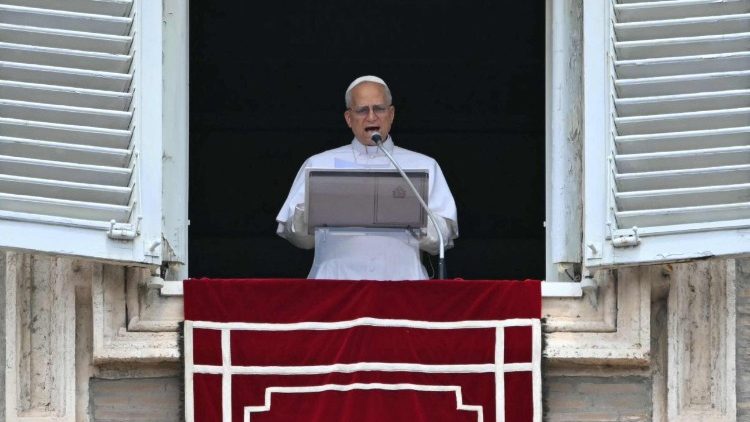What does Easter mean?
At Easter, the church celebrates the resurrection of Jesus Christ from the dead. It is the main festival of the Christian faith. According to the apostle Paul, the Christian faith would be invalid without Easter: “But if Christ has not been raised, then our preaching is empty, and your faith is empty too” (1 Cor 15:14).
The word “Easter” probably comes from the terms “eos” (Greek), “aurora” (Latin) or “austro” (Old Germanic), which all mean “dawn”. The resurrection took place in the early morning of Easter Day.
What is resurrection?
The resurrection leads from death to new life. This central event permeates the Bible. The relationship between man and God begins with Adam’s sin. He eats from the tree of knowledge and thus goes against God’s commandment. The consequence is death for himself and all his descendants. Man cannot make up for this sin on his own. Jesus comes into the world to save us, to reconcile mankind with God. He is the sacrificial lamb taking all the world’s sins upon himself. He is the true Passover lamb. As the sinless one, he voluntarily goes to his death on the cross to make this atonement. But death does not have the last word. Jesus is raised from the dead by God the Father. Life then continues in a new way.
But Jesus is not the only one who rises from the dead. Every person must die at some point – and will rise again according to the Catechism of the Catholic Church (CCC 998). We cannot yet know what the resurrected body will look like. It is beyond our imagination. At the end of the Bible, the Book of Revelation states that the “New Jerusalem” represents the new world after the resurrection of the dead.
What happened at Easter?
Jesus’ words and actions met with resistance from the religious leaders: on the one hand, he convicted them of hypocrisy, and on the other, he described himself as the Son of God. For the devout Jews, this was blasphemy and had to be punished with death. The high priests arrested Jesus and accused him of being a troublemaker before the Roman ruler Pontius Pilate. Although Pilate was convinced of Jesus’ innocence, he had him scourged and sentenced to death on the cross. Pilate feared an uprising by the Jewish people, whom the high priests had stirred up. Jesus carried his cross to the place of execution outside the gates of Jerusalem and died after forgiving his executioners. His friends took down the body and laid it in a tomb. This was on Good Friday.
Jesus lay in the tomb the following Saturday, and his friends had to observe a Sabbath rest. When women from Jesus’ circle went to embalm the body early in the morning of the day after the Sabbath, they found the tomb empty. Jesus had risen from the dead. Jesus appeared to them and the disciples many times until his ascension. He then sent the Holy Spirit, strengthening the young church and enabling them to follow him.
Easter in a biblical context
The Bible contains allusions and anticipations of Jesus’ sacrifice on the cross and the resurrection. Here are two examples from the Old Testament:
The story of Abraham points to Easter. God asks him to sacrifice his son Isaac and only holds him back at the last moment (Gen 22). However, God makes this sacrifice and does not prevent the death of his own son, Jesus, on the cross.
Easter is anticipated very clearly when Moses is supposed to lead the people of Israel out of the bondage of the Egyptians. Pharaoh does not want to let his slaves go. God brings many plagues upon Egypt. The last one consists of God sending an angel of death who kills all the first-born of man and beast in Egypt. God tells Moses that only those who paint the blood of a lamb on their door beams will be spared.
The term “lamb” is a parallel to Easter. It is also often used for Jesus in the Bible. Furthermore, Jesus is God’s firstborn, who was killed for the guilt of others. The beams of the door are reminiscent of the beams of the cross. Through sin, the way to God was closed like a locked door. This separation was lifted again through the bloody sacrifice on the cross; figuratively speaking, the door to God was opened again through Jesus’ blood (Ex 12).
The death and resurrection of Christ are also central to the New Testament:
Jesus repeatedly pointed out to his disciples that he would die and rise again from the dead long before Easter. This was often difficult for the disciples to understand (e.g., Mark 8:31).
The apostle Paul derives the good news from the death and resurrection. Because Jesus died as a human being, we will rise from the dead like Jesus. Jesus, the Son of God, has become like us humans and has renewed creation with the resurrection: “Therefore if anyone is in Christ, he is a new creation: old things have passed away; behold, new things have come” (2 Cor 5:17). Here, “being in Christ” means believing in Christ.
Paul writes (especially in his letter to the Romans) that it is no longer important to fulfill the commandments to the letter. A person cannot earn eternal life by fulfilling the commandments. Jesus says: “The spirit is willing, but the flesh is weak” (Mark 14:38). Man cannot free himself from this dilemma by his own efforts. Jesus takes all sins upon himself as an atoning sacrifice for the world. We are made righteous – not because of our works, but because of our faith in Jesus. If we cling to him and allow him to die for us, we can share in his salvation.
Easter liturgy
The Church celebrates the Paschal Mysteries anew every year. This part of the church year begins with Lent and ends with Pentecost.
Ash Wednesday
The first day of Lent is Ash Wednesday. As a sign of repentance, a cross made of ashes is drawn on the foreheads of the faithful during the service.
Holy Week
The week before Easter is known as Holy Week. “Kar” roughly means “sorrow” or “mourning”. It begins with Palm Sunday. The services from Maundy Thursday to Easter are regarded as one unit (“Triduum Sacrum” or “Triduum Paschale”).
Palm Sunday
On this day, Jesus’ entry into Jerusalem is celebrated. Jesus rode into the city on a donkey, and the people spread carpets and palm branches in front of him. They cheered him, “Hosanna to the Son of David! Blessed is he who comes in the name of the Lord. Hosanna in the highest!” (Mt 21:9). Just a few days later, the people demanded the death of Jesus. Processions with palm branches are often held on Palm Sunday in the liturgy.
Maundy Thursday
Jesus already knows that he will be betrayed and must die. He gathers his disciples for the Last Supper and asks them to repeat this meal again and again in his memory. In doing so, he gives the Church the Eucharist. He transforms the bread and wine into his body and blood. He gives the apostles the authority to perform this miracle similarly.
Good Friday
On this day, Jesus was interrogated by the Roman ruler Pontius Pilate. He condemned him to death on the cross. The story of the Passion is told during the Good Friday liturgy. The novena to Divine Mercy begins on Good Friday. It ends on the Sunday after Easter.
Holy Saturday
Jesus rests in the tomb on Holy Saturday. There is no liturgy. A tomb of Jesus is set up in many churches. The faithful go there and pray in silence.
Easter Vigil
The Easter Vigil is celebrated from Holy Saturday to Easter Sunday as a vigil. Up to eight readings and the Gospel are recited. Baptisms often occur during the Easter Vigil, and the faithful renew their baptismal vows.
Easter Sunday
The service on Easter Sunday is the celebration of the resurrection and is usually a solemn service.
Easter Monday
Important church feast days are followed by an eight-day festival period (Octave). The first day of the Easter Octave is Easter Sunday. It is followed by Easter Monday, where Christ’s risen walk to Emmaus with two disciples is the liturgy’s focus.
White Sunday/Sunday of Divine Mercy
The end of the Easter Octave is the Solemnity of Divine Mercy. This feast goes back to the revelations of St. Sister Faustina Kowalska and was introduced worldwide by St. Pope John Paul II in 2000. His own day of canonization is Divine Mercy Sunday, 27 April 2014.
Easter symbols
We encounter many symbols during the Easter period, only some of which are presented below. The original meaning is often difficult to determine and not always clear:
The Easter egg has several meanings. On the one hand, it stands for the destruction of the temple in Jerusalem and the resurrection. Christ has broken through the tomb, just as the chick broke through the egg.
The hare is already known to pagan cultures as a symbol of spring. In the teachings of icon painting, the hare is also a symbol of human weakness. The hare seeks protection in the rock that represents Christ.
The Easter candle symbolizes Christ, who brings light into the darkness.
The (Easter) egg has several meanings. On the one hand, it stands for the destruction of the temple in Jerusalem and the resurrection. Christ has broken through the tomb, just as the chick broke through the egg.
The hare is already known to pagan cultures as a symbol of spring. In the teachings of icon painting, the hare is also a symbol of human weakness. The hare seeks protection in the rock that represents Christ.
The Easter candle symbolizes Christ, who brings light into the darkness.
The paschal lamb is, in turn, a symbol of Christ, who allows himself to be sacrificed without resistance. He is the Passover lamb of the New Covenant. In the Bible, the term “lamb” also often stands for Christ. In the Book of Revelation, the lamb is no longer just a sacrifice but ultimately the ruler.
- Hector Pascua/picture: Bild von Gerd Altmann auf Pixabay
This post has already been read 3625 times!



